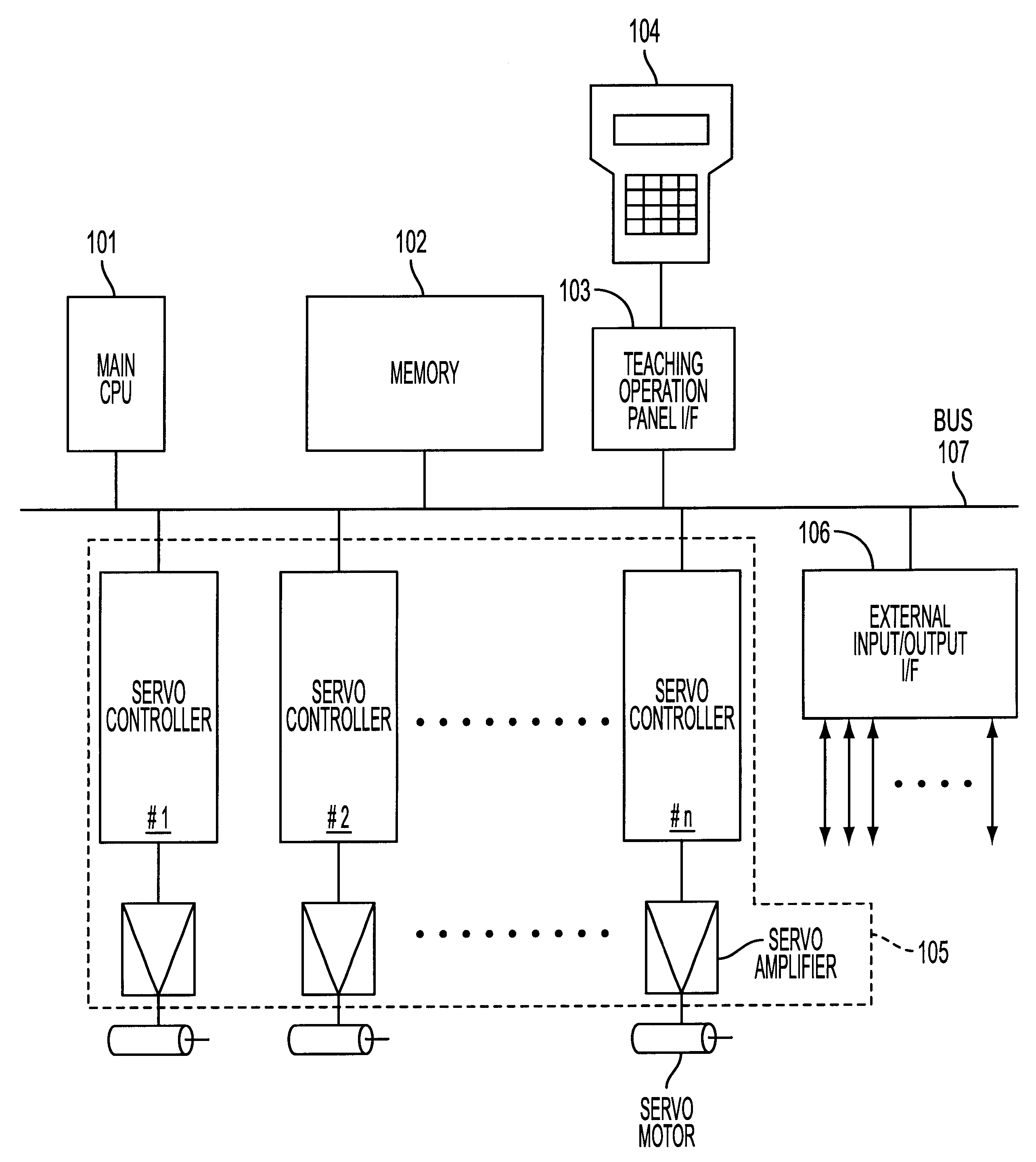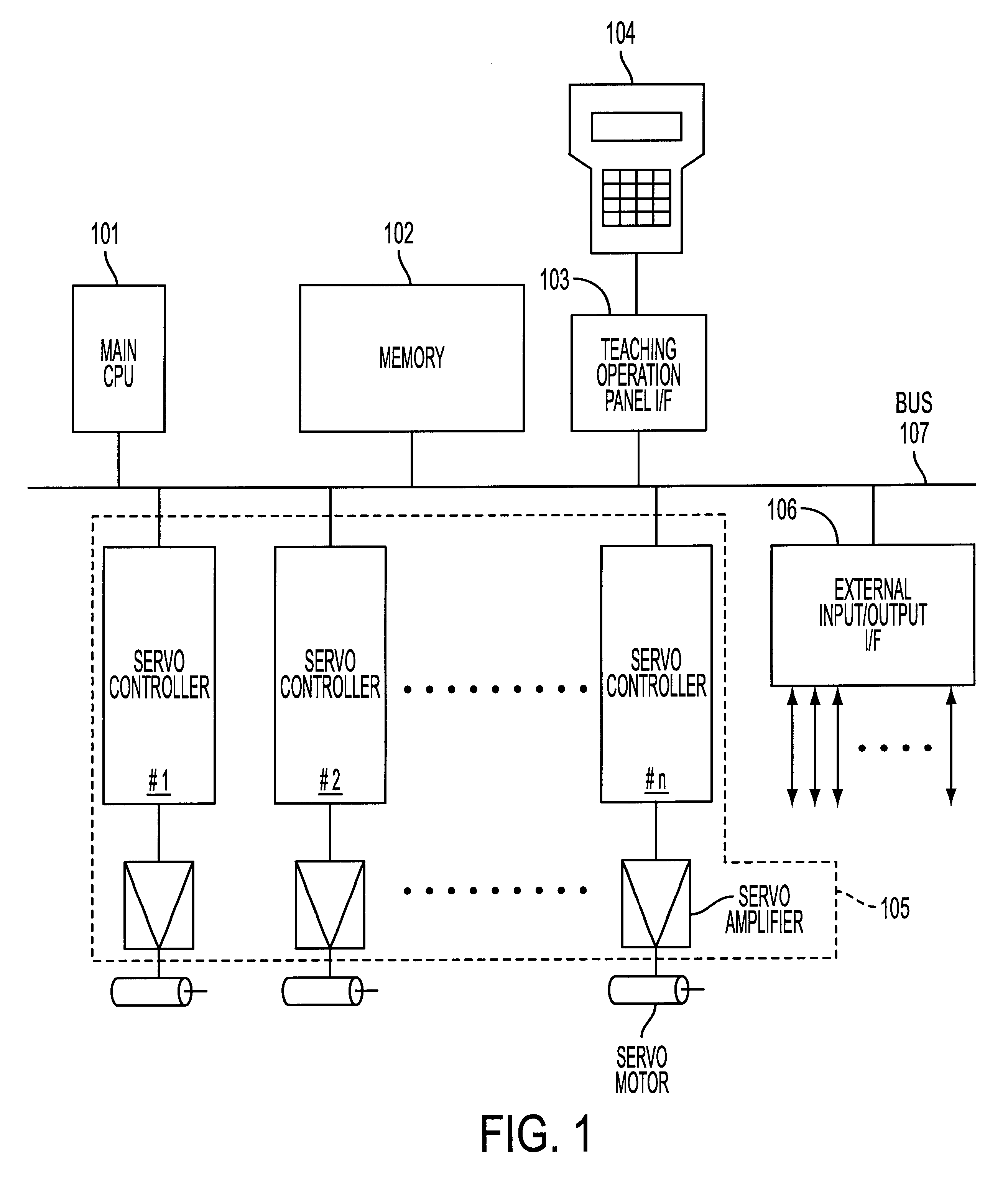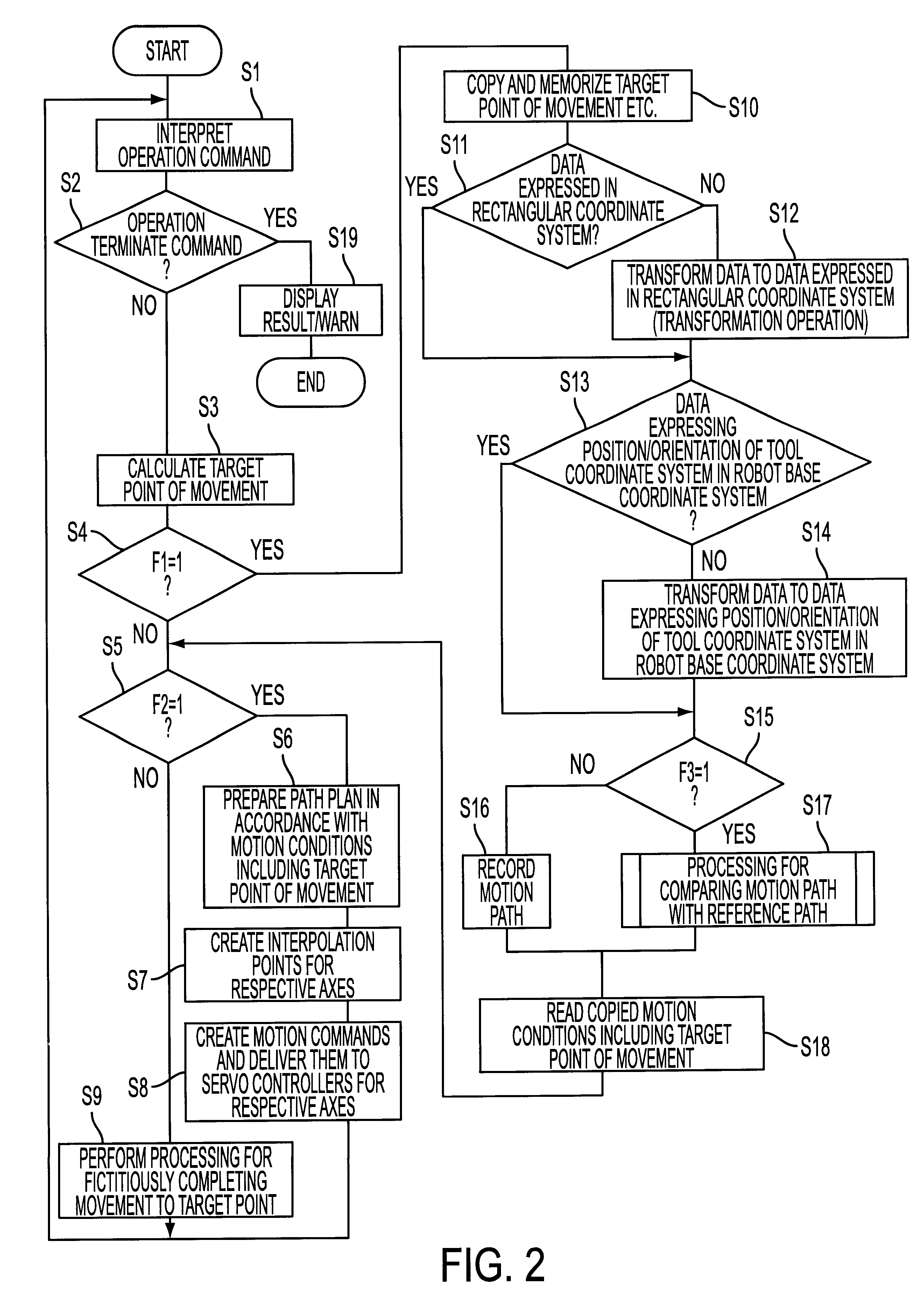Robot control device having operation route simulation function
- Summary
- Abstract
- Description
- Claims
- Application Information
AI Technical Summary
Benefits of technology
Problems solved by technology
Method used
Image
Examples
second embodiment
In the processing to be executed according to the first or second embodiment, the following mode flags F1 to F3 are prepared in the memory 102 as means for designating operation or non-operation of a path memory means, a path comparison means, and a robot real machine, respectively. Each of the flags F1 to F3 is a binary register served as a mode selection switch, and takes a value of "0" or "1". An operator can select a desired operation mode by designating the value of each flag to be "0" or "1" in advance through the teaching operation panel 104.
F1: a flag functioning as a switch for selecting ON (F1=1) / OFF (F1=0) of a simulation function which characterizing the present invention.
F2: a flag functioning as a switch for selecting ON (F2=1) / OFF (F2=0) of a real motion (motion of the real robot).
F3: a flag functioning as a switch for selecting On (F3=1) / OFF (F3=0) of a comparison mode (mode for comparing a present path and a reference path)
first embodiment
FIG. 2 is a flowchart for explaining essentials of processing to be executed in the invention. The processing starts which an operator inputs a processing start command through the teaching operation panel 104 after the values of the above flags F1 to F3 are set (mode selections are completed). The CPU 101 reads one block of motion commands (in this embodiment, including an operation terminate command) of an operation program prepared by preceding teaching operation, and interprets (decodes) the command (Step S1).
Generally, operation commands (except for an operation terminate command) includes an absolute-position motion command, a relative-position motion command, a velocity command, a positioning manner at a target position (positioning rate), an external input / output command, and so forth. Unless the read block is an operation terminate command (when the determination in Step S2 is "No"), the procedure proceeds to Step S3, where a target point of movement (position and orientati...
third embodiment
In the processing performed in addition to the above described mode flags F1 to F3, a flag F4 is provided in the memory 102 as means for changing an operation mode of the robot controller. The flag F4 is a digital register used for nullifying a real motion when necessary, and takes a value of "0" or "1" according to the following definition:
F4:F4=1 means that the function of nullifying a real motion is in an on-state (a real motion is blocked). F4=0 means that the function of nullifying a real motion is in an off-state (a real motion is not blocked).
The essentials of processing performed according to the third embodiment is as shown by a flowchart of FIG. 6.
As in the case of the first or second embodiment, the processing starts when an operator inputs a processing start command through the teaching operation panel 104 after the values of the flags F1 to F3 are set (mode selection). The CPU 101 clears the flag F4 to "0" (Step G1) and reads one block of operation commands (including ...
PUM
 Login to View More
Login to View More Abstract
Description
Claims
Application Information
 Login to View More
Login to View More - R&D
- Intellectual Property
- Life Sciences
- Materials
- Tech Scout
- Unparalleled Data Quality
- Higher Quality Content
- 60% Fewer Hallucinations
Browse by: Latest US Patents, China's latest patents, Technical Efficacy Thesaurus, Application Domain, Technology Topic, Popular Technical Reports.
© 2025 PatSnap. All rights reserved.Legal|Privacy policy|Modern Slavery Act Transparency Statement|Sitemap|About US| Contact US: help@patsnap.com



